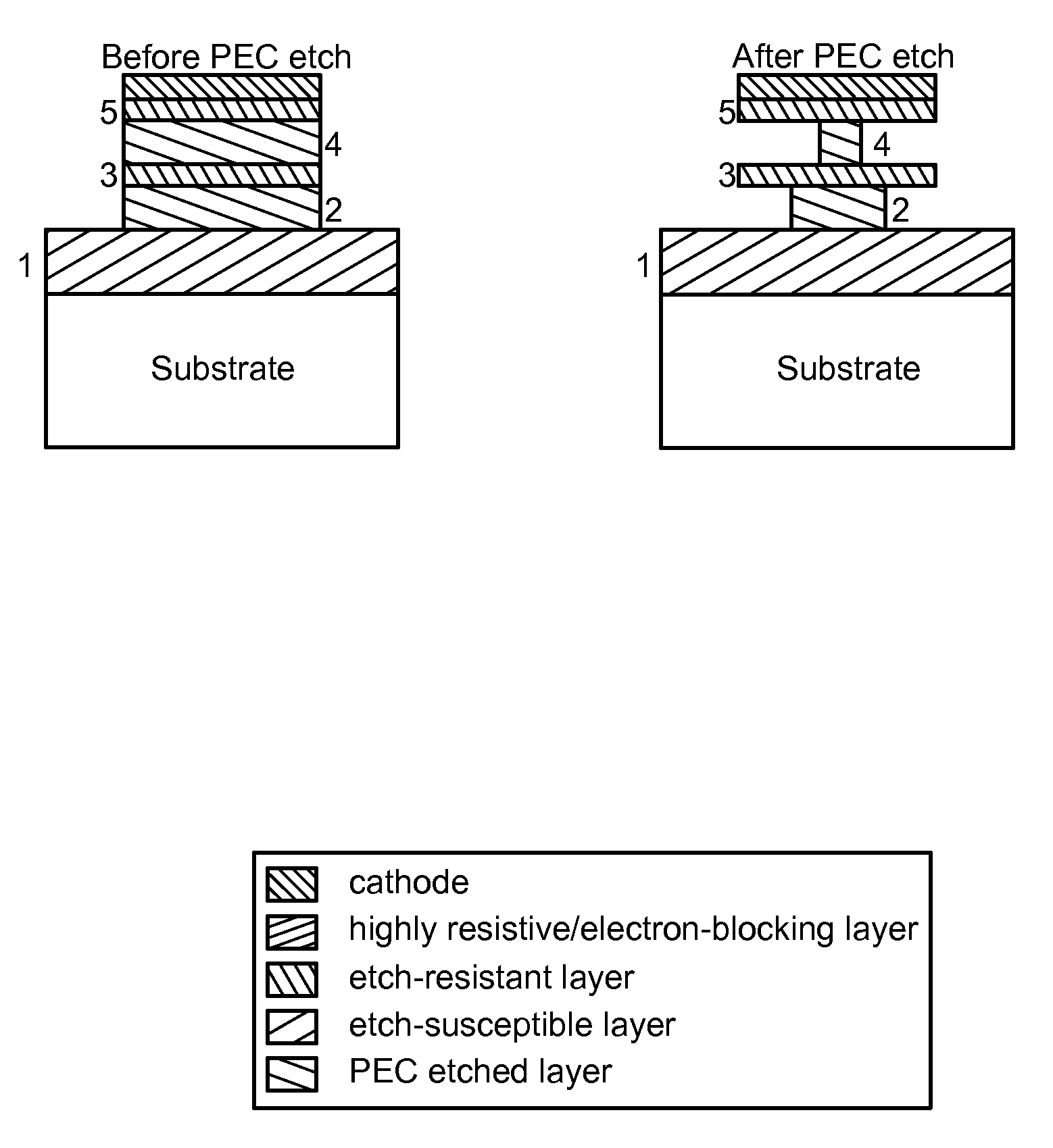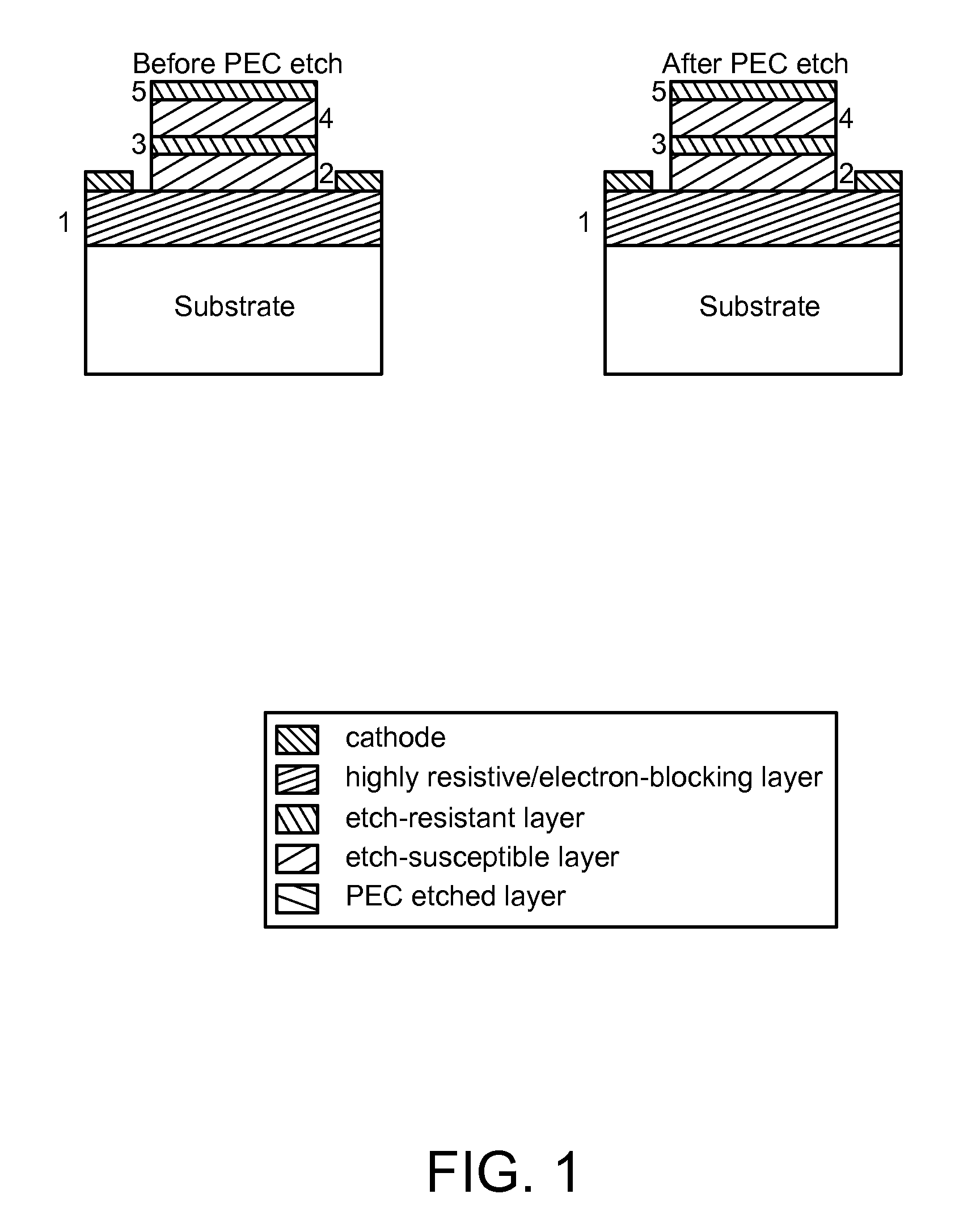Control of photoelectrochemical (PEC) etching by modification of the local electrochemical potential of the semiconductor structure relative to the electrolyte
a technology of local electrochemical potential and semiconductor structure, which is applied in the direction of semiconductor devices, lasers, semiconductor lasers, etc., can solve the problems of high material thickness, limited device design possibilities for these geometries, and high material composition of the undercut layer
- Summary
- Abstract
- Description
- Claims
- Application Information
AI Technical Summary
Benefits of technology
Problems solved by technology
Method used
Image
Examples
Embodiment Construction
[0033]In the following description of the preferred embodiment, reference is made to the accompanying drawings which form a part hereof, and in which is shown by way of illustration a specific embodiment in which the invention may be practiced. It is to be understood that other embodiments may be utilized and structural changes may be made without departing from the scope of the present invention.
[0034]General Purpose
[0035]PEC etching is a viable method for producing specific geometries in the III-nitride material system, forming three-dimensional structures that would be extremely challenging to produce with gas-phase etching processes or more standard wet chemical etching. The existence of a controlled three-dimensional etch process can give rise to numerous useful device geometries. Specifically, an undercut geometry is desirable in several applications including but not limited to microdisk resonators, air-gap DBRs, semiconductor membranes and cantilevers, electrical and optical...
PUM
 Login to View More
Login to View More Abstract
Description
Claims
Application Information
 Login to View More
Login to View More - R&D
- Intellectual Property
- Life Sciences
- Materials
- Tech Scout
- Unparalleled Data Quality
- Higher Quality Content
- 60% Fewer Hallucinations
Browse by: Latest US Patents, China's latest patents, Technical Efficacy Thesaurus, Application Domain, Technology Topic, Popular Technical Reports.
© 2025 PatSnap. All rights reserved.Legal|Privacy policy|Modern Slavery Act Transparency Statement|Sitemap|About US| Contact US: help@patsnap.com



